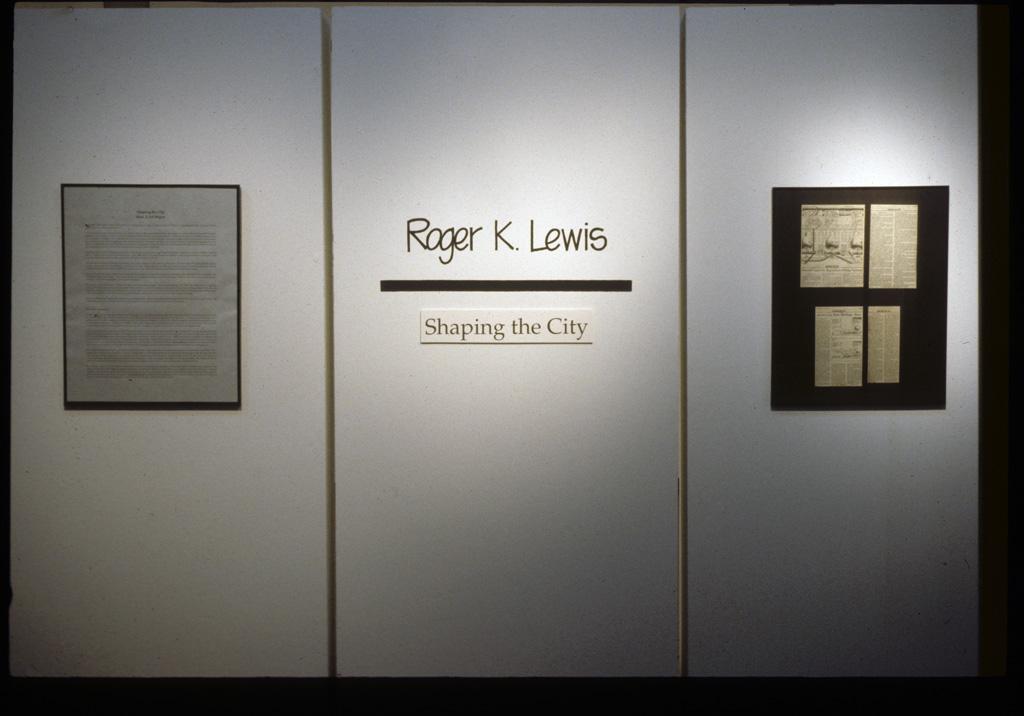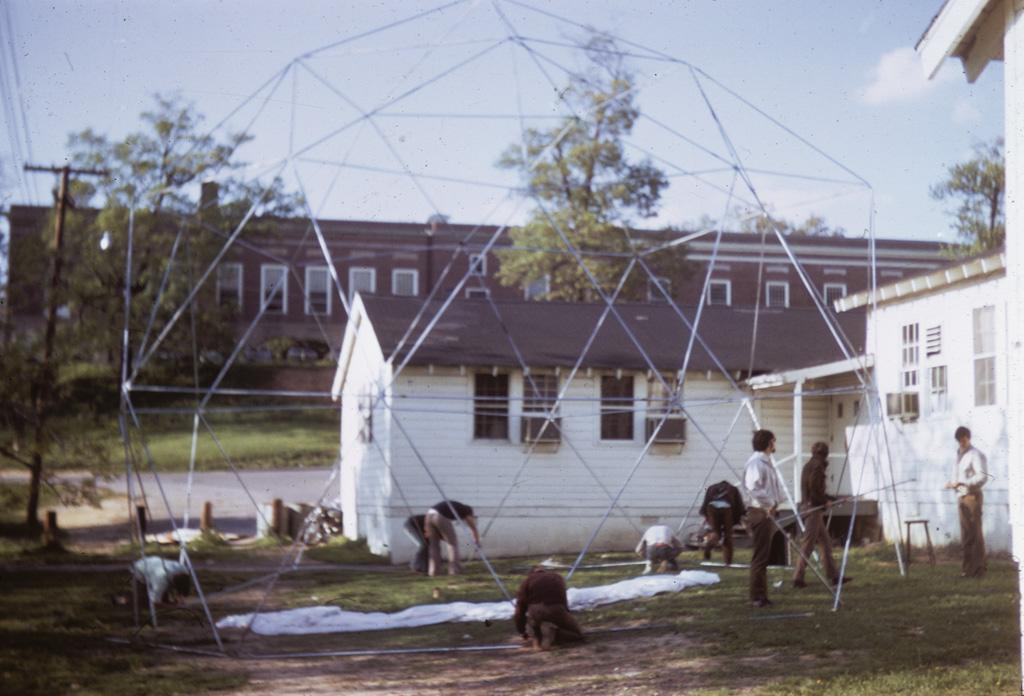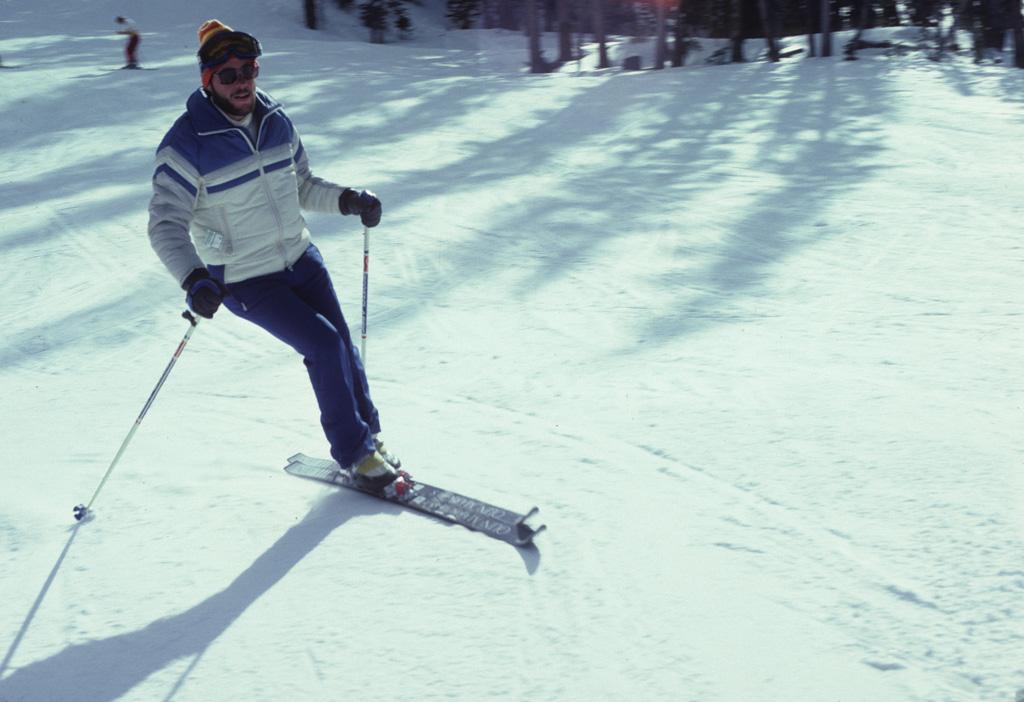In the introduction of “Architect? A Candid Guide to the Profession,” Roger K. Lewis recounts an agonizing “slump” during his sophomore year at MIT when he realized he had no future in physics. He sought counsel from a sympathetic dean of students, who saw his penchant for drawing and desire to do something tangible—and suggested he visit MIT’s architecture department.
“I remember thinking, ‘Do students actually get credit for this?’” said Lewis,eyeing the pencil sketches pinned to the design studio walls.
True to its title, “Architect” tells a straightforward story of the path to the profession for anyone curious enough to embark on the journey. As its author, Lewis helped thousands follow in his footsteps and sail into a career in architecture. But, it’s just a chapter of Lewis’ life’s work and dedication as a teacher, mentor, writer, practitioner, civil servant and known authority on the urban landscape of the nation’s capital.
Professor Emeritus Roger K. Lewis, FAIA, who died Oct. 2, 2024, at 83, shared his love for the built environment with many—from the scores of commuters who read his Washington Post column, “Shaping the City,” each week to the generations of students he nurtured at the University of Maryland’s Architecture Program. Over his decades-long career, he balanced a professional trifecta as an architect, writer and teacher with prolific service to the profession, most recently as president of the Peace Corps Commemorative Foundation.
“He was instinctively generous,” said longtime colleague and friend Professor Emeritus Bill Bechhoeffer. “There was a special kind of spirit there. His first instinct was always to help and to find creative ways to make things happen.”
Born in 1941 in Houston, TX, Lewis earned his bachelor’s degree in architecture from MIT in 1964; he designed more than two dozen public buildings in Tunisia for the Peace Corps before returning to MIT for his master’s degree in 1967. Lewis came to the University of Maryland’s fledgling architecture program, the first professional program in the state, in 1968 as one of its founding faculty alongside Bechhoeffer, Dean John Hill, John Wiebenson, Rik Ekstrom, Dale Hutton and Bob Bell. Together, they constructed a curriculum that, beyond history and theory, emphasized experiential learning and service for the greater good, tenets that remain steadfast today. He planned the program’s first study abroad trip, shepherding its first graduating class on a one-month, five-country juggernaut across Europe and Africa.
“It was a special event of a lifetime,” said Mark McInturff ’72. “He was just formative for us in those years.”
Outside of UMD, Lewis designed and consulted on countless residential, cultural and community projects across the U.S. and abroad, mostly through his firm Roger K. Lewis & Associates. But, it was his knack for distilling complex topics within the built environment that brought him to the Washington Post in 1984, first as a guest columnist and then as a permanent fixture. His nearly 40-year career writing “Shaping the City” tackled design, urban planning and real estate issues across the region with both wisdom and humor, each footnoted with one of his signature cartoons; a collection of his drawings later became the subject of an exhibit at the National Building Museum.
“Roger always appreciated nice drawings that showcased care and skill, he really tuned into them in our projects,” said Jeff Hains ’85, M.Arch ‘88. “He was very supportive that way and always encouraged students to just enjoy the art of drawing and establish their own hand.”
Lewis retired from UMD in 2006 but remained an active participant in studio crits and thesis reviews, lectures and celebrations. In 2007, He established the Roger K. Lewis Graduate Fellowship to provide financial support to students in the architecture program.
While no longer practicing, he continued to consult, and led the effort to establish Peace Corps Park with the National Park Service until his death. Behind the scenes, he was unstoppable, quietly connecting alums and colleagues with projects that came across his desk, volunteering his time on design committees and working to help colleagues attain the elusive FAIA moniker. His success was in part due to his writing chops, but also because he was a masterful thinker, said Bill Bonstra ‘83, who Lewis helped go twice after fellowship (with the second time successful).
“I would give him the parts I was struggling with in the application and he would underline words and say, ‘Bill, this is the point,’” he said. “He could just zoom in on these ideas.”
Lewis was an avid skier and sailor and played the banjo. He designed and was the general contractor on his home in D.C. that he shared with his wife of 53 years, Ellen; a loophole in the city’s zoning laws allowed him to build multiple residences on the single lot, creating a tight knit co-op that at one point included Bechhoeffer and his wife, Sondra. In addition to Ellen, he is survived by his son Kevin, daughter-in-law Katherine, a brother, sister and four granddaughters.
Lewis’ legacy lives on in everything—and everyone—he touched, and in ways that will endure. Last month, a prospective student visiting UMD’s architecture program remarked that she was interested in architecture, and Maryland, because of a book she read: “Architect? A Candid Guide to the Profession.”
“He was a lifelong teacher,” said McInturff. “When you’re in school, you don’t know what relationship, if any, you’ll have down the road with these people. With Roger it was ongoing. It’s as if school didn’t stop.”
Share in Roger’s legacy by contributing to the Roger K. Lewis Graduate Fellowship at: https://go.umd.edu/rogerlewis
Read his tribute in the Washington Post.






